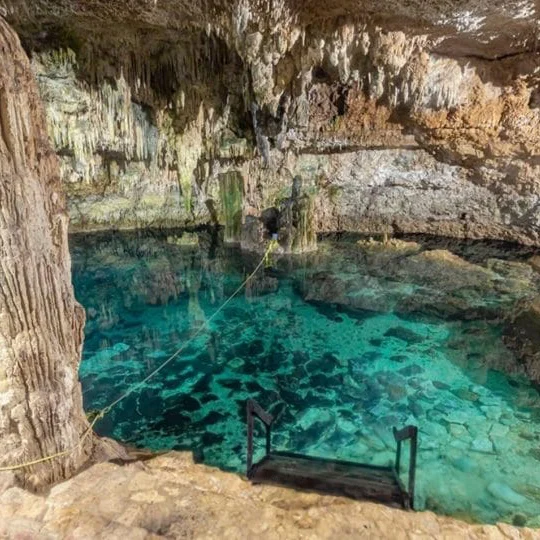Tragic Dive at Cenote Manatí: Mystery Surrounds Fatal Accident of Unnamed Diver


| Incident Location | Diver Full Name |
|---|---|
| Mexico, Tulum, Yucatan Peninsula, Cenote Manatí | Unknown |
On June 16, 2018, what was meant to be a safe, beginner-friendly scuba diving experience near Tulum, Mexico, ended in disaster. A young diver participating in a Discover Scuba program drowned after becoming trapped inside an underwater cave at Cenote Manatí. The incident raised serious questions about safety practices during beginner dives and the risks involved when inexperienced divers encounter challenging underwater environments.
What is Discover Scuba and How It Should Work
Discover Scuba is a popular introduction to scuba diving, designed for people who have never dived before. It’s meant to provide a safe, controlled environment where participants can learn basic skills and breathe underwater under close supervision. Normally, an instructor leads the session with a small group—up to four students per instructor, or six if the instructor has an assistant.
This strict limit exists so instructors can maintain immediate control over each student. The students must remain under close watch to respond quickly if any problems arise. Usually, Discover Scuba takes place in open water with good visibility, calm currents, and shallow depths.
The Group and the Location
On that fateful day in June 2018, however, a group of 10 young men contracted a local instructor who claimed to provide a full instructional team—one lead instructor and two assistants. This group size far exceeded the recommended student-to-instructor ratio, putting the dive at risk from the start.
The dive took place at Cenote Manatí, a large natural sinkhole in the Yucatan Peninsula, near the coastal town of Tulum. Cenote Manatí is not just any cenote; it connects directly to the Sac Actun cave system, the longest underwater cave system in the world. The cenote is a collapsed section of this cave system that forms a deep pool with an underwater entrance leading into the cave.
Understanding Cenote Manatí’s Risks
One of the biggest dangers at Cenote Manatí is that it is a siphon cave. Water flows through the cenote into the cave system and out towards the nearby ocean. This creates a current that pushes water—and divers—toward the cave’s exit into the bay.
Siphon caves are inherently risky because the current can easily pull divers deeper into the cave, making it difficult or even impossible to return to the entrance. Only divers with specific training and experience should enter siphon caves because of this risk.
Dangerous Conditions on the Day of the Dive
On June 16, recent heavy rains had swollen the underground water system, making currents stronger than usual. The current at the cave entrance was reportedly so strong that a whirlpool could be seen on the water’s surface.
Visibility was severely reduced, down to roughly three feet, due to sediment stirred up by the rain. These conditions were far from ideal for a beginner diving program, which typically requires clear, calm water to ensure safety.
Despite these warnings signs, the dive proceeded. Several students decided to end their dives early, surfacing due to the challenging conditions. But the group was still underwater when tragedy struck.
The Incident Unfolds
As the dive continued, two students went missing when the group surfaced. Panic set in as the remaining divers and assistants searched for them near the cave entrance. One of the assistants soon found the two struggling in the strong current just outside the cave.
One diver managed to grab hold of the assistant and was pulled to safety. The other, however, was caught by the current and pulled into the cave’s dark, narrow passageways. Despite the immediate danger, no rescue attempt was made to enter the cave after the diver disappeared inside.
The Rescue Effort and Its Limitations
Local authorities were called to assist, but the cave’s difficult conditions and remote location meant specialized help was needed. Experienced cave divers, trained in rescue and recovery operations, were summoned to the scene. However, by the time they arrived, hope for a live rescue had faded.
The poor visibility and strong currents inside the cave made searching for the missing diver almost impossible. The rescue team was unable to locate the diver during their initial efforts and had to postpone the search until conditions improved.
Recovery and Equipment Analysis
The next day, a large team of about ten experienced divers returned to the cave to continue the search. After an exhaustive effort, they found the diver’s body wedged in a crack deep inside the cave.
A detailed examination of the diver’s equipment showed everything was complete and functioning correctly. His air tanks, regulators, and other gear were all in good working order, indicating that equipment failure was not a cause of the tragedy.
What Went Wrong?
Analysis suggests the diver could have followed the cave’s current all the way through to the exit in the bay. However, this exit point was not visible from the part of the cave where he was trapped. Without proper training or knowledge of the cave system, he likely didn’t know this escape route existed.
The strong current and limited visibility inside the cave, combined with the diver’s inexperience, created a deadly trap. What might have been a manageable situation for a trained cave diver became fatal for a novice.

